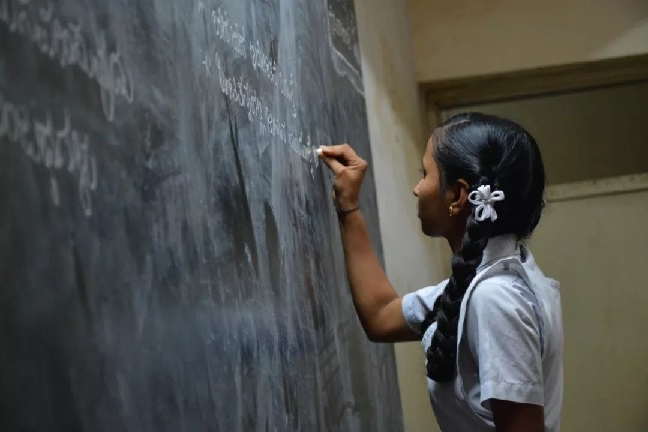WEI WU(CENTER)WITH CO-PIS QUAN NGUYEN(LEFT)AND MIKE CHEN(PHOTO CREDIT:USC VITERBI)
What is artificial intelligence? True to our species’ tendency for hubris, we often think of the best AI as something that might one day do what we think we’re so great at:using logic for problem-solving, creativity, or classification. But there are all kinds of brains out there in the natural world and all kinds of ways to think about intelligence. In fact, a more primitive part of our own brain is now the inspiration for some exciting new research.
The cerebellum is the small part of the human brain armchair neuroscientists often refer to as our “lizard brain.” Among other things, it handles a lot of what we do subconsciously regarding movement and balance. Now, thanks to a recent IARPA grant, the cerebellum is the inspiration for a new generation of robots. Wei Wu, professor of electrical and computer engineering and PI on the grant, believes better understanding how the cerebellum makes decisions can lead to greatly improved micro-drone technology.
First, let’s better understand the challenge. “Microdrones are hugely important robots that can do anything from help in defense to disaster relief and more,” said Wu. “But because they are by their very nature so small, they don’t have the weight, space, or power to do much real computing on their own.” In other words, most microdrones can’t make complex decisions on their own and instead must rely on humans controlling at least some of what they do from afar. That makes them more expensive to operate and less autonomous.
AC chips are less precise, but they can improve the performance of such drones and implement more advanced algorithms or enhance intelligence. In other words, imprecision is exactly what the team believes makes it ideal for this task.
Wu and his co-PIs, Mike Chen, professor of electrical and computer engineering, and Quan Nguyen, assistant professor of aerospace and mechanical engineering, aim to solve this problem by employing a never-before-used form of computing:Analog Computing(AC). “Researchers have been talking about AC for some time, but it’s never been implemented because it isn’t nearly as precise as digital computing,” said Nguyen. “But AC circuits allow the controller to react much faster.” In fact, although AC chips are less precise, they can improve the performance of such drones and implement more advanced algorithms or enhance intelligence. In other words, that imprecision is exactly what the team believes makes it ideal for this task.
When humans move in our environment, the cerebellum goes to work. But it might surprise you to know that it’s not especially precise at what it does. When it comes to maintaining balance, for example, the cerebellum isn’t concerned with details. Knowing the exact degree to which you might be tipping over isn’t important. What is important is knowing that the tipping is happening, and quickly correcting it. In the computing world, being able to make the right decision quickly is called latency. And it just so happens that AC, just like the cerebellum, is not so great at precision but exceptionally good at latency.
“We hope that by using this new approach, the next generation of microdrones will be able to make more decisions on their own and eventually be truly autonomous,” said Wu. And this work truly would be a new approach. In fact, it represents the first time ever that AC has been used for practical, real-world applications.
For Wu and Chen specifically, the opportunity to collaborate has been a long time coming. The two researchers both work in electrical and computer engineering(ECE)and have been close friends for years. “Because ECE is so broad in scope, our research has never intersected before. It’s exciting to have an opportunity to combine both our areas of expertise towards a common goal,” said Chen.
The team’s goal, which they are already working on, is to design a novel AI brain inspired by the cerebellum and operating on AC. And this brain, like biological brains, must have more than one part. In this case, Wu is designing the device itself, while Chen builds the circuit and Nguyen writes the algorithm. All three of these parts are equally necessary for the drones to function properly.

















